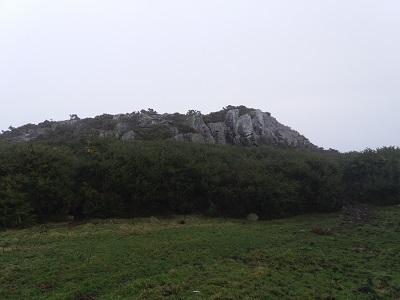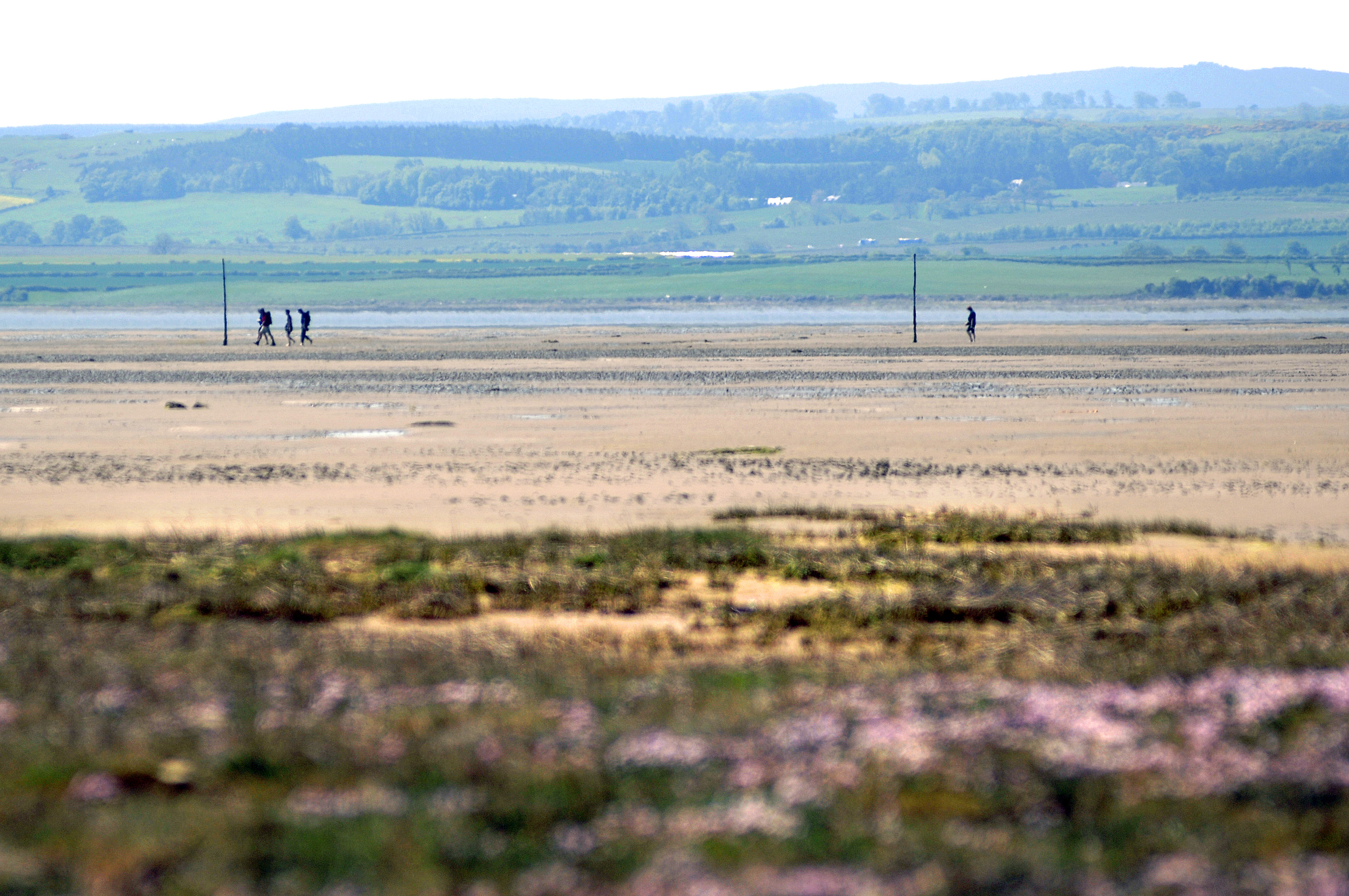It's now over month or so since our last gorse clearance session on Kippy Heugh. Encouraged by the spring sunshine I took a walk up there yesterday to see the results of our labour...
Over four Tuesdays in February, Peregrini volunteers cleared a large swathe of gorse from around the whin outcrop of Kippy Heugh, high above Easington Farm on the road to Waren Mill. The gorse bushes were mature, up to head height in most places, and were completely obscuring the craggy slopes of the heugh. The dense covering of gorse meant few other plants could get foothold on what could be a key site for whin grassland.
'Whin grassland' is a term for a set of plants that grow together on thin, nutrient-poor soils with underlying whinstone geology. There are only a few sites in Northumberland that support this range of species. Examples include sites along Hadrian’s Wall and where there are whin outcrops or ‘heughs’ on the coast. In fact the Peregrini Lindisfarne area is blessed with a string of these habitats that arc from Bamburgh to the Kyloe Hills and include The Heugh (a whin dyke rather than outcrop) on Holy Island.
Iain Robson from the Northumberland Coast AONB commended the gorse removal carried out by volunteers and added "Because of the influence of the sea, the whin grassland sites on the Northumberland coast have a unique range of species, making them rarer than rainforests and hence worthy of our protection." And, whilst little has reestablished as yet on Kippy Heugh, my site visit yesterday confirmed that the treatment of the gorse stumps has worked extremely well with no gorse regrowth visible.
The work carried out by the volunteers at Kippy Heugh is just one aspect of our Whin Sill Geology and Grasslands project. Training sessions for land managers - including a demo of a robotic flail mower at Bamburgh Golf Club and a one-day course on grazing regimes, run by Northumberland College at Kirkley Hall - have been held. Renowned bontanist Janet Simkin from Newcastle University is currently reviewing baseline data for the heughs in the Peregrini Lindisfarne area. The project has also afforded the removal of several hectares of gorse by contractors at Bamburgh Golf Course.
For Kippy Heugh, the work undertaken in February represents ongoing conservation. Around a decade ago it was identified by Northumberland Wildlife Trust and partners as one of six case study sites into the management of this delicate and rare habitat across Northumberland. Part of the case study was to clear gorse from the heugh, to fence it off and introduce a new grazing regime. For the large part, this work was successful but clearly gorse is still a problem on the site and hence our intervention.
We need your help to continue this conservation work! This spring and into early summer, we'll be organising plant surveys to be led by Naomi Waite of the Northumberland Wildlife Trust. The new information collated by Naomi and volunteers will allow comparison with baseline data, which in turn can be used to inform the management of these precious whin grasslands. If you'd like to volunteer to help carry out these surveys, please do get in touch.
Other Photos


